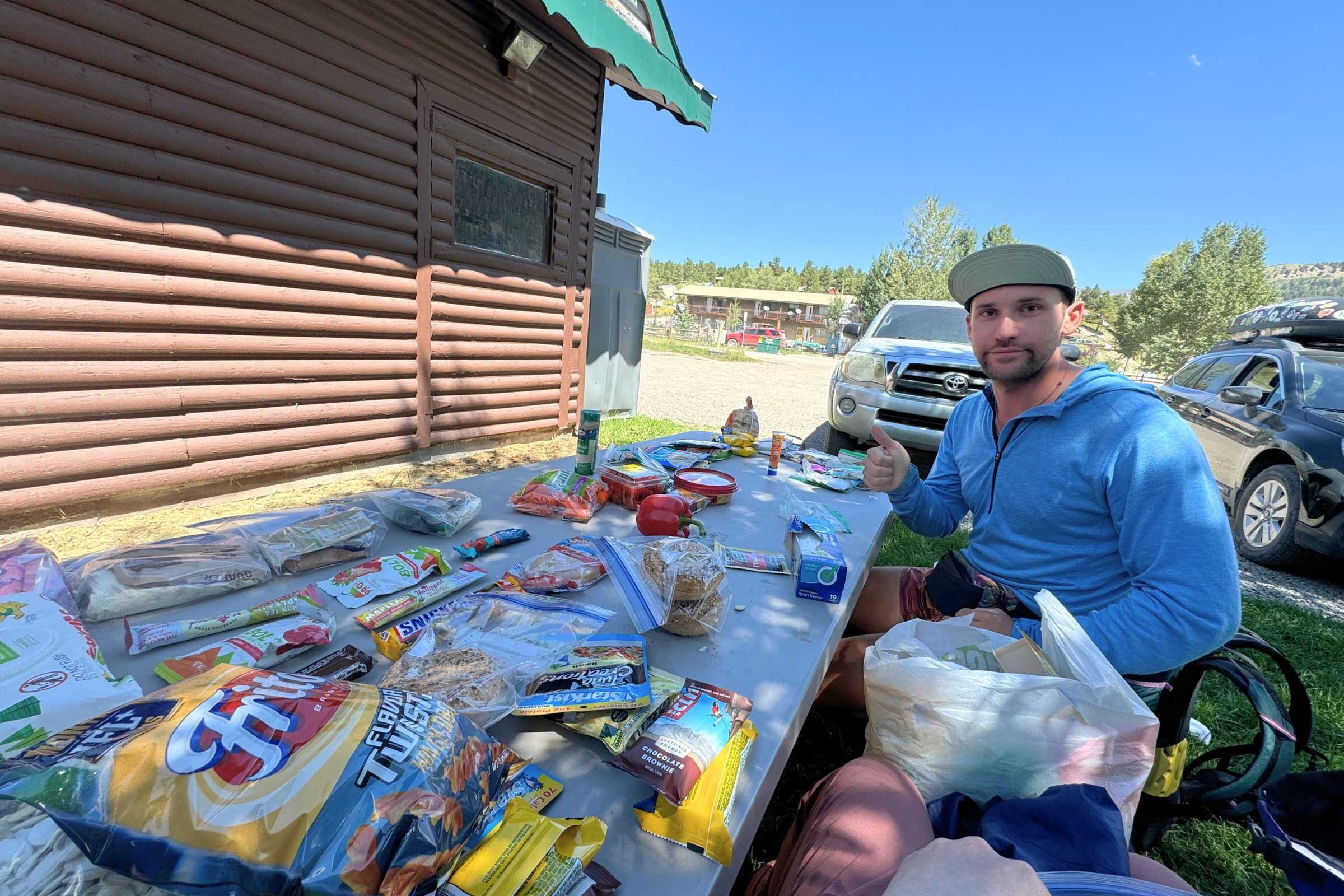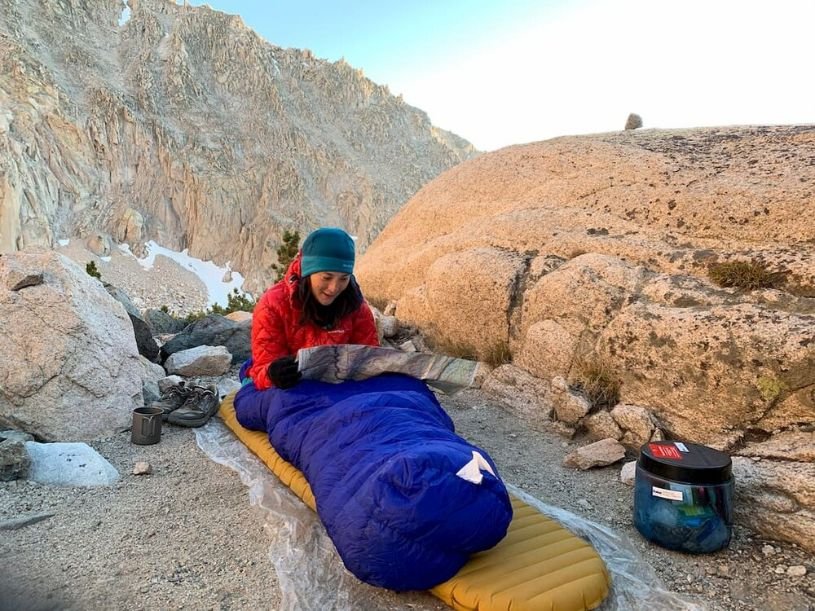15 Tips to Prevent Injury in the First 100 Miles of a Thru-hike
A physiotherapist’s guide to the best tips and strategies for avoiding injury on the trail
April 30th, 2025
Home > Gear Reviews > Fitness & Nutrition
One thing every hiker survey has in common is that most hikers who end their trip early do so because of injury or illness. From my experience on my own thru-hikes and as a mobile physiotherapist along the Pacific Crest Trail with Blaze Physio, I know this to be true—especially in the first few weeks of any long-distance hike.
After working with thousands of hikers over the years, both on and off trail, I’ve seen the same preventable issues pop up time and time again. I’ve also written about five of the most common hiking and backpacking injuries and gear swaps to help prevent them, which I also recommend checking out.
This guide, however, is intended to provide you with tips and strategies to avoid a wider array of possible injuries. Here’s what I’ve learned that might help you avoid an early trip home.
We create reader-supported, objective gear reviews independently selected by our editors. This story may contain affiliate links, which help fund our website. When you click on the links to purchase gear, we may get a commission — without costing you an extra cent. Thank you for supporting our work and mission of outdoor coverage for every body! Learn more.
Tip 1: Don’t panic.
Most injuries can be managed and hiked through. No one hikes thousands of miles without pain at some point. How you respond to your pain could make all the difference in your ability to continue. My advice: don’t panic, adjust your gait (but don't limp), and get a plan. Humans are resilient—and you are no exception.
Tip 2: Take care of your skin!
Take care of your skin by wearing sunscreen–not only is it vital for avoiding sunburn, but it can prevent discomfort that might cause you to adjust how you walk or carry your pack and cause injury.
Sun protection: A thru-hike is a tremendous amount of time to be in the sun. Use proper protection so future you doesn’t regretfully look back on this hike while getting lumps and bumps cut off at the dermatologist. Sunburns can also cause injuries—I’ve seen shoulder, knee, and ankle injuries from people adjusting how they walk or carry their packs to avoid painful skin.
Friction: Stop and address hot spots as soon as you feel them. Try your best to avoid anything that might make you limp or adjust your gait. Limping is a common cause of secondary injuries that are often worse than the issue that caused the limp.
Hygiene: No one talks about it, but keep your butt clean. Bacteria, sweat, and friction are a fast track to rashes—and you don’t want to deal with that down under. This can also contribute to pack chafe, which can be so, so painful. If you're waddling down the trail to avoid irritation or chafing, you're shifting how your legs move in a way that can overload different tissues—similar to how limping can lead to secondary injuries.
Infections: Take care of any breaks in your skin (and brush your teeth!) because an infection in this heat, in the middle of nowhere, can escalate fast.
Check out our Best Body Suscreens and Best Face Sunscreens guides for our recommendations.
Tip 3: Slow down!
No, really—take breaks. Don’t hike for hours and hours every day at the start. You literally have all day to hike 10–15 miles in the beginning of a hike. People often blow through their mileage plan and arrive at camp by noon. Try to spread things out so camping at your mileage goal doesn’t feel like wasting time. Taking regular breaks can reduce your risk of fatigue and stress fractures. Even if your lungs and muscles feel fine, your bones still need a rest.
Tip 4: Make more friends!
Keeping pace with your trail family isn’t always sustainable. Sometimes, to stay on trail, you need to let people go. The trail has a funny way of bringing you back together—someone who hiked ahead might be delayed later, and you’ll catch up. In the meantime, I promise the people behind you are just as cool. Rest, regroup, and make more friends.
Rest, regroup, and make more friends (and rest with your new friends!).
Tip 5: Keep your factory insoles.
If you decide to switch to Superfeet or another insole, it might be a great fit—but sometimes it’s not. The easiest fix? Keep your factory insoles in your pack for a couple weeks, just in case.
Side note: choose an insole that matches your foot. If you have flat feet, high arch insoles might just give you pain and blisters. A little support can be great—but support that doesn’t fit your foot won’t help. Learn more in our Should I Use Insoles with my Hiking Shoes guide.
If you decide to switch to an orthopedic insole, keep the factory insoles for a couple weeks just in case.
Tip 6: Stay hydrated!
Hydration supports muscle recovery and joint lubrication.
Yes, you’ve heard it a million times—but it’s true. Hydration supports muscle recovery and joint lubrication. Plus, dehydration increases your risk for heat stroke, fatigue, and even injury. You’ll recover better and hurt less when you’re properly hydrated.
You can find more hydration tips and recommendations in our Hydration Tips for Trail Runners and Best Electrolyte Powders guides.
Tip 7: Change your shoes.
Replace them every 500 miles, or sooner if you notice foot pain, unusual wear patterns, or swelling. Your feet might grow or change, and you may need to try new brands on trail.
If you’re switching to a lower-drop shoe (e.g., from 5 mm to 0 mm), do it slowly—this change can stress your Achilles and calves.
Don’t stick with a shoe just because you already bought more pairs. Your feet will hit the ground over 5 million times—things will change. Modify your shoes if needed. Is the shoe rim rubbing on your ankle bone? Cut it down. A small change might save your hike.
If the shoe rim is rubbing on your ankle bone and causing discomfort, you can cut it down.
Check out our guides on Best Hiking Boots, Best Lightweight Hiking Boots, Best Men’s Hiking Shoes, and Women’s Hiking Shoes, and Best Men’s Trail Running Shoes, and Women’s Trail Running Shoes. Not sure whether hiking shoes or trail running shoes are best for you? We’ve got a helpful guide on choosing Trail Running Shoes vs. Hiking Shoes.
Tip 8: Take “zero” days.
When your load (miles, vert, speed, pack weight) exceeds your capacity (fitness, sleep, nutrition, hydration, stress), your injury risk skyrockets. Pro athletes sleep in beds and have recovery days. You’re eating a Snickers bar and sleeping on the ground in a windstorm. Take full rest days to recover. Most endurance athletes take 1–2 rest days per week. You’ll learn how much rest you need, but if you don’t prioritize it early, there might not be a later.
Take full rest days to recover and limit the chance of injury.
Tip 9: Easy on the “vitamin I.”
Pain is information, just like hunger or thirst. Inflammation helps us heal. Numbing pain constantly can lead to overuse and longer recovery. There are times for ibuprofen–known by many thru-hikers as “vitamin I”–but not daily. Use alternatives like elevation, compression, hydration, or just a solid rest break.
Tip 10: Listen to your body.
Pain isn’t always bad. Here’s a quick guide, using a 1–10 scale (10 being the worst):
Pain <3 that goes away or moves around? Usually fine.
Pain >5? Take a break. If it doesn’t go away, make a plan.
Pain <5 but getting worse or more frequent? Time to address it.
Any pain causing a limp or compensation? Get on it.
I wrote more in-depth about Dealing with Pain on a Thru-hike, so I recommend checking that out for more pain management and recovery strategies.
Tip 11: Eat when you’re not hungry.
Your body’s adjusting to trail life, and appetite can lag behind. Eat anyway. Try liquid calories and prioritize protein. Eventually your hunger will spike, but you need fuel for recovery early too. Check out @backcountry_foodie for trail-friendly nutrition ideas. You can also check out Treeline Review Staff’s favorite freeze-dried backpacking meals.
Eating, even early in a thru-hike when you aren’t hungry, is important for recovery.
Tip 12: Control your pack weight.
Heavier packs correlate to more knee pain and IT band issues, so try to keep the weight down as much as possible early on in your thru-hike.
Your ultralight gear doesn’t matter if you’re overcarrying food and water. Many people overpack in the first section of a thru-hike. Heavier packs correlate with more knee pain and IT band issues. Learn as you go, and dial it in early.
Tip 13: Be safe in town.
Weird but true: every hiker injury I’ve seen that happened in town ended in them going home. Common culprits? Alcohol, curbs, bird scooters (looking at you, Tahoe). Alcohol delays recovery, too. I’m not here to be the fun police—but you’re doing a high-exertion activity with limited recovery. Make smart choices.
Tip 14: Bring earplugs.
Sleep is everything. Whether it’s your tentmate snoring or relentless wind, earplugs can mean the difference between a rough night and solid recovery.
Tip 15: Film your gait.
Have someone take a video of you walking on trail with your pack. It’s not just a memory—it’s a helpful tool if you need an injury consult later. Gait changes with fatigue and uneven terrain.
Pro tip: walk slower, take shorter steps, and reduce your foot slap (i.e., how forcefully your foot hits the ground when you step). Those 5 million steps should count.
Final Thoughts
You don’t need to hike perfectly—you just need to hike smart. Most trail-ending injuries are preventable, especially if you stay aware, prioritize recovery, listen to your body, and respond to pain early. Your body is tough. Take care of it, and it could carry you thousands of miles.
About the Author / Why You Should Trust Us
Dr. Morgan Brosnihan is a licensed physical therapist and founder of Blaze Physio, a mobile clinic serving hikers along the Pacific Crest Trail. With thousands of hikers treated and helped along the way, she specializes in helping long-distance hikers stay healthy and on trail.













